No. 40 | The 14th Five Year Plan: A Fresh Start for China and the World
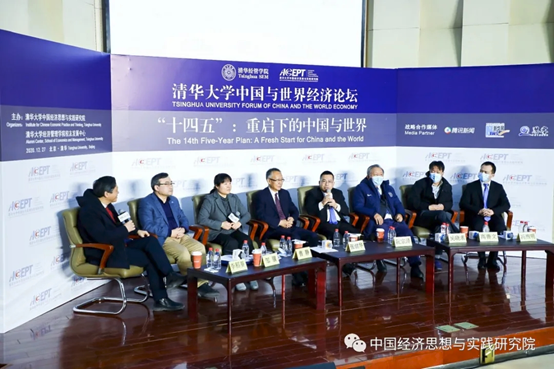
On December 27, the 40th Tsinghua University Forum of China and the World Economy, centered on the theme of The 14th Five-Year Plan: A Fresh Start for China and the World, was held in Weilun Auditorium on Tsinghua University campus. The event was jointly organized by the School of Social Sciences, the Academic Center for Chinese Economic Practice and Thinking (ACCEPT), and the Center for Alumni Development at the School of Economics and Management of Tsinghua University. Experts in attendance included: David DaokuiLi, Director of ACCEPT; Ruan Zongze, Executive Vice President of the China Institute of International Studies; Zhang Jianhua, President of Hua Xia Bank; Wu Xiaoqiu, President of the China Capital Market Research Institute and Former Vice President of Renmin University of China; Gao Shanwen, Chief Economist of Anxin Securities; Zou Ji, CEO and President of Energy Foundation China; Cao Jing, Associate Professor of Economics in the School of Economics and Management at Tsinghua University; and Feng Xuming, Deputy Director of the Department of Comprehensive Economic Research at the Institute of Finance and Economics of the Chinese Academy of Social Sciences. Li Ke’aobo, Executive Deputy Director of ACCEPT, presided over the forum. Lei Dingming, Professor of Economics at Hong Kong University of Science and Technology, and Jason Furman, Professor of Economics at the Harvard Kennedy School, also attended the forum via remote conferencing.
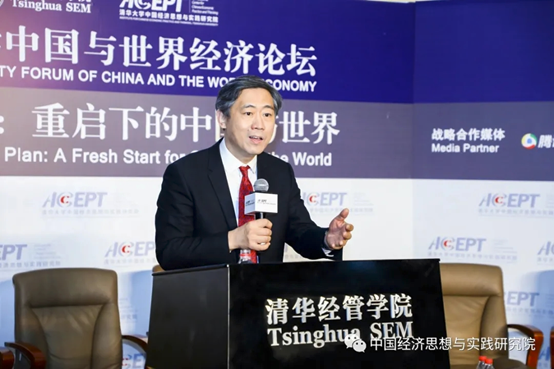
At the forum, Executive Deputy Director Li Ke’aobo and Research Fellows Lu Lin, Li Bing, and Guo Meixin introduced ACCEPT’s latest Analysis and Forecast of China’s Macroeconomy, titled: “The Start of the 14th Five-Year Plan: Reconfiguring Economic Geography to Enhance Domestic Circulation and Readjusting Economic and Trade Relations to Open Up New Space in the International Economy.” The report begins with a review of the changes in China’s macroeconomic situation over the past year. Based on ACCEPT’s analysis, China’s growth rate is expected to rebound to 5.5% in the fourth quarter, up from -6.8% in the first quarter of 2020. In other words, China’s growth has essentially returned to a normal range, mainly due to the rapid resumption of production. In addition, export growth has been another vital factor contributing to this rapid economic recovery.
On the other hand, China is still experiencing weak consumption due to declining income growth and a lower propensity to consume for low- and middle-income groups. According to data released by the National Bureau of Statistics, per capita disposable income in the first three quarters of 2020 declined by 0.3% in urban areas. This decline is due to abruptly reduced activity in catering, accommodation, tourism, housekeeping, and other service industries since the outbreak of the pandemic. As a result, numerous service industry employees have lost their jobs and suffered significant reductions in their per capita income. Meanwhile, the shock of the pandemic has caused a fall in the marginal propensity to consume and a rise in the preference for saving. In the first three quarters, per capita consumption expenditure in urban areas accumulatively decreased by 8.4%—a decline far exceeding that of per capita disposable income.
The Internet economy is a bright spot for China that must not be self-defeating.
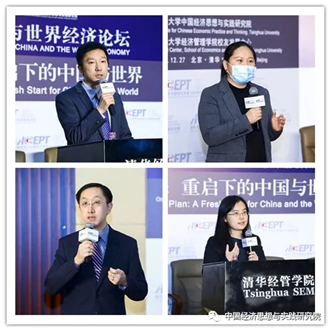
Li Ke’aobo (top left), Guo Meixin (top right)
Li Bing (bottom left), Lu Lin (bottom right)
David Daokui Li, Director of ACCEPT,then took the podium and shared further insights. First, demand is insufficient for China to achieve growth, especially considering the pandemic. During this year plagued by COVID-19, China’s annual GDP growth is expected to reach 2.1% for the whole year, but consumption is still weak—this year’s 2.1% economic growth is mainly a result of infrastructure construction and exports. The reason for the lack of domestic demand is that residents’ income has not increased. According to the report, we should fully utilize the opportunities afforded by the reconfiguration of China’s economic geography in the next phase of development, which will create new growth points in the medium- and long-term. Throughout this process, we should prioritize people’s happiness and respond to their housing preferences and livability needs. It is also particularly important to promote the regional economic development of population outflow areas. We must relocate certain vital industries to match the local comparative advantages of these population outflow areas to prevent them from experiencing a decline in growth. At the same time, their per capita GDP growth rate should also rise in tandem with other regions.
Second, the Internet economy is a bright spot in the Chinese economy that should be cherished. There are problems, and we must acknowledge them, but we cannot say that the internet economy is all bad. On a global scale, we face competition from US and other international Internet companies, so we must be incredibly precise in our regulatory and antitrust measures. Furthermore, the financial measures related to Internet supervision must be implemented in accordance with the standards applicable to the financial sector. Apart from this, there is no need to be overly concerned since domestic competition in the Internet industry is quite fierce, and the pattern of competition is still far from being formed. This is different from the monopolistic nature of today’s crude oil trusts, and it is also completely contrary to the nature of the US telecommunications company AT&T.
Third, as for how to kick off the 14th Five-Year Plan and implement the new development philosophy, Professor Li believes that the key is to sort out the relationship between the government and the market, which should be a positive and complementary relationship rather than a relationship where one overpowers the other. The government should work in the same direction as the market.
We must monitor the inflationary pressure caused by rising energy prices.
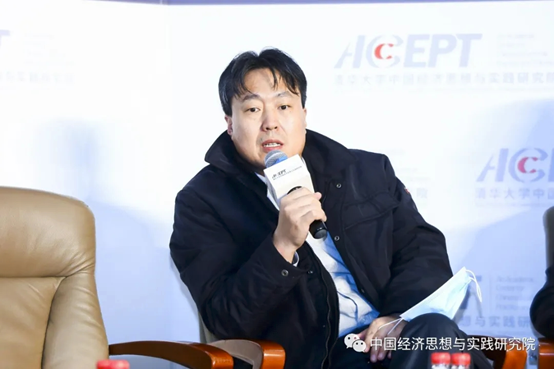
The macroeconomic situation in 2021 will be quite similar to that of the second half of 2016. In 2020, the prices of commodities ranging from oil to iron ore, to rebar, to coal have generally risen. This trend will continue until the first quarter of next year, or perhaps even into the middle of the second quarter, and these rising prices will quickly spread to middle and downstream industries.
Gao Shanwen explained that China’s economic recovery has gradually strengthened since the second half of 2020, and this recovery should continue in the first half of 2021. The recent rise in commodity prices has even started to cause concern in some areas as to whether there will be more evident price increases in the first half of next year, given the imbalance between supply and demand. Nevertheless, the extraordinary year of 2020 is coming to an end, and we will usher in a complete recovery in 2021 as we restore our normal pace in all areas.
China is approaching a generational demographic cliff.
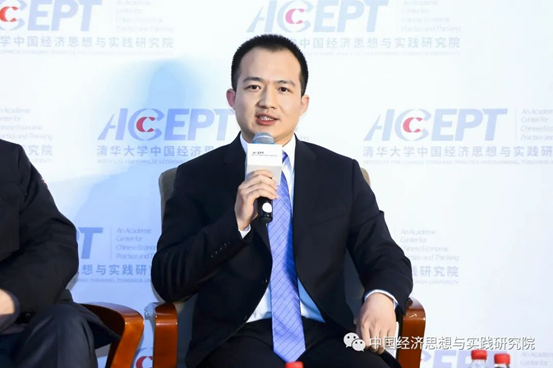
Feng Xuming holds that China’s approaching demographic cliff and urbanization are two areas that require our attention. At the forum, he illustrated this point using the well-known demographic statistics of the number of people born in China in the 1980s, 1990s, and 2000s. The population born in the 1980s is the largest, reaching 210 million people, whereas the population born in the 1990s is about 10 million less. Furthermore, the population of those born in the 2000s is about 50 million less than those born in the 1990s. If we group these generations into two broader groups of those born between 1980-1999 and those born between 2000-2019, we can see a decline of 110 million.
Feng Xuming indicated that the impact of these demographic changes during the 14th Five-Year Plan may not be too significant, but over the next 15 years, starting with the 14th Five-Year Plan and reaching through 2035, this demographic cliff will impact all aspects of Chinese society, including increasing pressure on housing prices, social security, and financial capacity.
Non-performing assets in the financial sector will increase in 2021.
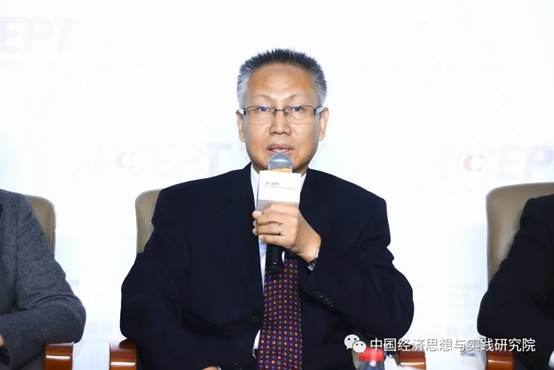
Speaking on the development of China’s financial sector this year, Zhang Jianhua remarked that following the outbreak of the pandemic at the beginning of the year, people were nervous and pessimistic. Nevertheless, thanks to the joint efforts of all parties, we can say that China’s financial industry has generally managed to operate smoothly this year. However, it should be noted that there will be another arduous task to face in 2021, which is to prevent the rebound of non-performing assets, which have had some significant rises this year.
Feng Xuming warned that the management of macro debt constitutes one of the major risks that require our attention. This year, due to the pandemic and related factors, the macro leverage ratio has risen by 25-30 percentage points, consistently reaching about 27%. In the macroeconomic research community, there is a relatively loud voice saying that the leverage ratio will stabilize or even fall next year. The argument is that this year’s leverage ratio has risen too fast for a special reason—namely, the once-in-a-century pandemic. However, if the leverage ratio is excessively stabilized or lowered in the next year, this may exert significant pressure on all local government operations and the entire real economy, which will be detrimental to the post-pandemic economic recovery.
Rising A-share values have concealed accelerated market differentiation.
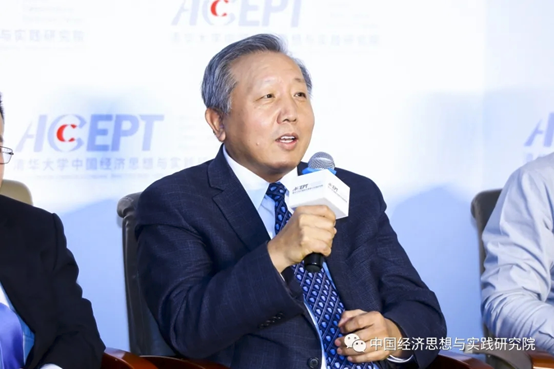
Wu Xiaoqiu, former Vice President of Renmin University of China, asserted that China must encourage innovation in its systems, policies, and environment. Problems that arise should be corrected in a timely manner, and more importantly, whether for web platforms or the financial sector, standards should be tailored to fit the format of new industries. From a policy perspective, we still need to focus on supervision, future development directions, and policy reforms to prevent the emergence of systemic financial risks, given that finance is constantly moving and innovating. Furthermore, Wu Xiaoqiu believes that the era of regarding real estate as an investment is over. From a contemporary point of view, real estate has poor liquidity, and from an investment perspective, it is far inferior to stocks.
Gao Shanwen pointed out that the median increase in China’s A-shares in 2020 has amounted to only 1%. In terms of number, half of stocks have experienced decreasing values. To a certain extent, the rise of the stock index has concealed the relative acceleration of market differentiation, which is more worthy of our attention. In terms of specific industries, such as the widely observed new energy vehicle industry, is there a significant bubble? Gao Shanwen holds that there will be a small bubble in the short term, but in the long run, the avenues of competition in the new energy vehicle sector are several times wider than those of smartphones—spacious enough to accommodate more companies.
Regarding stocks in traditional industries such as oil and aviation companies, their prices have not yet risen, and some have even declined sharply. Will there be room for these stocks to rebound? Gao Shanwen believes that such room exists, but it is limited. It boils down to the fact that the avenues of competition in these industries have transformed, and a massive amount of demand has been transferred online due to the impact of the pandemic. The shock caused to these industries is not entirely a short-term result of the pandemic, but a long-term one.
China is expected to drive the world economy.
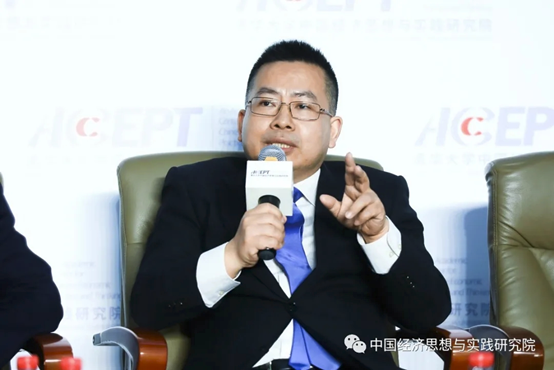
Speaking on the future of international relations, Ruan Zongze said that peace and development should remain the themes of the times. Although the US tends to pursue unilateralism, it has not reversed the general trend of peaceful development. As the US has embarked on the path of decoupling and unilateralism, we have seen the voice of unity in the international community actually become stronger. Ruan Zongze remarked that we ought to see the power of China and recognize the fact that our country serves as a stabilizer. We must have confidence that China will once again lead and drive the world economy as it emerges from the crisis.
Lei Dingming, Professor of Economics at Hong Kong University of Science and Technology, also shared his insights. In his opinion, China’s economic strength may surpass that of the US in the future. The US has handled the pandemic quite poorly and its domestic economy has suffered greatly. Although COVID-19 has been somewhat contained in the first half of 2021, there may still be a rebound. Healing will take place over the next few years, and Biden may repeal some Trump-era policies when he takes office in order to get the US economy moving nicely again.
The costs of energy transition can be diluted through economies of scale.
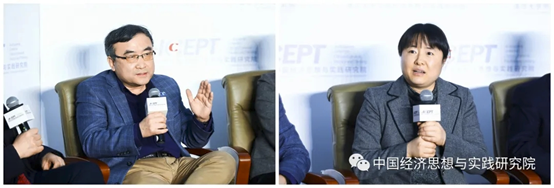
Beginning with a discussion of the recent extreme weather in southern China, Cao Jing introduced the concepts of carbon peaking and carbon neutrality, which are worthy of attention in the near term, and pointed out that the main pain point of China’s response to climate change is coal dependence. Compared with Western countries, China relies primarily on coal for energy, and coal-fired power plants account for more than half of the country’s total power generation. If newly-built power plants are decommissioned earlier than planned, this will inevitably lead to huge costs and losses. However, from a corporate development perspective, only by achieving carbon neutrality will Chinese companies be able to gain an advantage in the international market and achieve longer-term growth. To enhance our competitiveness, it is imperative for China to attain carbon neutrality. This year, President Xi Jinping's confidence boost and encouragement on this issue have been very significant.
According to Zou Ji, energy supply problems during extreme weather are mainly related to power wattage rather than insufficient total power. The right to development (including the right to comfortable living) is closely linked with the growth rate as well as carbon and pollution emissions. China can no longer go down the path of environmental pollution to achieve growth, as the country has already passed this developmental stage. Furthermore, green development is full of business opportunities. Zou Ji also cautioned that despite China’s commitment to energy conservation and emission reduction as well as the corresponding price that it has paid, we cannot count on concessions and preferential treatment from the international community. Instead, we must dilute costs on our own through economies of scale. In northwestern China, there are significant amounts of renewable resources. If relevant departments can invigorate the photovoltaic and wind energy industries in these regions, they will not only facilitate the building of a low carbon economy, but also address the issue of energy security.




